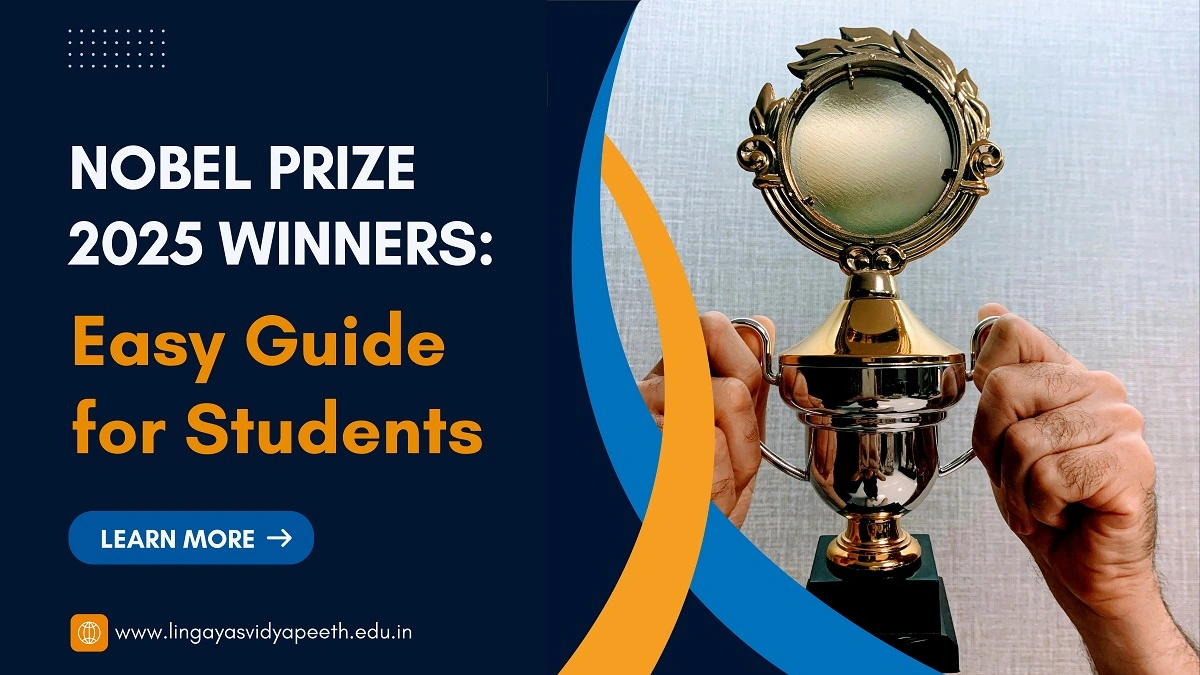Home » Nobel Prize 2025 Winners: Easy Guide for Students

Ever wondered what the Nobel Prize is all about? It’s one of the biggest honors in the world. People win it for amazing work in science, literature, peace, and economics. Alfred Nobel started it over 100 years ago to celebrate those who help humanity the most.
The 2025 winners are doing mind-blowing work that could change our lives. Don’t worry—we’ll explain everything in simple words so you can understand and get inspired. Maybe one day, it’ll be you on this list!
The Nobel Prize comes with over $1 million for most winners. But it’s not just about money—it’s about ideas that solve real problems, like climate change, health crises, or fighting for peace.
This year, winners came from the US, Japan, Venezuela, France, Australia, Hungary, and Canada. Great minds really do work across borders!
The 2025 Physics Nobel goes to John Clarke, Michel Devoret, and John Martinis (US & France). They discovered “macroscopic quantum tunneling and energy quantization in electric circuits.”
What does that mean? Normally, quantum physics is tiny—atoms and particles. But these scientists built a chip you can hold that shows quantum weirdness, like particles tunneling through barriers (think of a ball rolling through a wall!).
Why it’s cool:
Students, if you love tech, physics might be your playground for future inventions!
The Chemistry Nobel goes to Susumu Kitagawa (Japan), Richard Robson (Australia), and Omar Yaghi (US). They created metal-organic frameworks (MOFs)—basically tiny sponges made of metal and organic bits.
MOFs have huge empty spaces inside where gases can flow:
This prize shows chemistry can save the planet. Students, mixing elements could lead to the next eco-hero material!
The Medicine Nobel goes to Mary Brunkow, Fred Ramsdell (US), and Shimon Sakaguchi (Japan) for figuring out “peripheral immune tolerance.”
In simple terms: they discovered how our body stops the immune system from attacking itself. This is huge for:
Students, biology could let you save lives someday!
The Literature Nobel goes to László Krasznahorkai (Hungary) for writing stories that explore fear, hope, and humanity. His long, intense novels blend apocalyptic themes with calm philosophical reflections.
Students, grab a book! Writing helps you understand the world and share your ideas.
The Peace Nobel goes to Maria Corina Machado (Venezuela) for promoting democracy and pushing for a peaceful transition from dictatorship. She leads protests and rallies for free elections, even under threat.
Her story proves one person can spark huge change. Students, learning history and civic action could let you make a difference too!
The Economic Sciences Nobel goes to Joel Mokyr (US), Philippe Aghion (France), and Peter Howitt (Canada). They study how economies grow through innovation and creative destruction—old ideas replaced by new ones, like smartphones killing flip phones.
Students, math and business skills could help solve real-world economic problems.
From quantum chips to fighting for democracy, the 2025 winners prove human intelligence can solve tough problems. Over 900 people have won Nobels since 1901, and many started as curious kids like you.
Also Read
Ensemble methods in machine learning
THE World University Rankings 2026: Top 10 Universities Revealed
Study in India Shines at 2025 Sharjah Education Show
How to Choose the Best MBA Specialization: Step-by-Step
RECENT POSTS
CATEGORIES
TAGS
Agriculture Agriculture future AI Architecture artificial intelligence Bachelor of Commerce BA English BA Psychology BTech AIML BTech CSE BTech cybersecurity BTech Engineering Business management career Career-Specific Education career guide career option career scope Civil engineering commerce and management Computer Science Computer science engineering Data science degree education Engineering Engineering students English Literature english program Fashion Design Fashion design course Higher Education Journalism journalism and mass communication law Law career Machine Learning mathematics MBA MBA specialization Mechanical Engineering Pharmacy Psychology Research and Development students
Nachauli, Jasana Road, Faridabad, Haryana
Address: C-72, Second Floor, Shivalik, Near Malviya Nagar,
Above HDFC Bank, New Delhi 110017
Landline No. - 011-46570515 / 45138169 / 41755703
Mobile No. - +91-7303152412 / +91-7303152420 / +91-9311321952
Toll Free: 1800-120-4613
Mobile : 8447744303 | 8447744304 | 8447744306 | 8447744309
8700003974 | 8700003411 | 8700003749
Copyrights © 1998 - 2025 Lingaya's Vidyapeeth (Deemed To Be University). All rights reserved.
LV only conducts physical/online verification of any document related to examination on the following email id:
It is important to note that the following email IDs and domains are fraudulent and do not belong to our university.